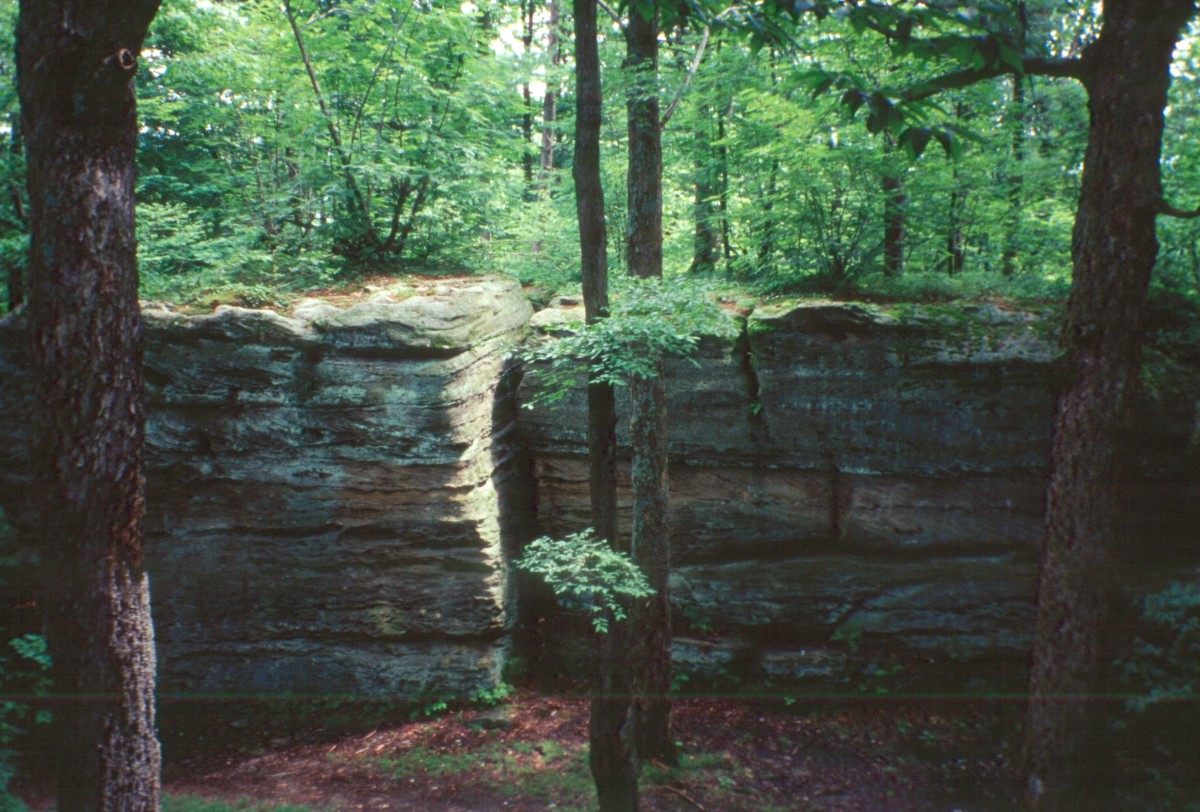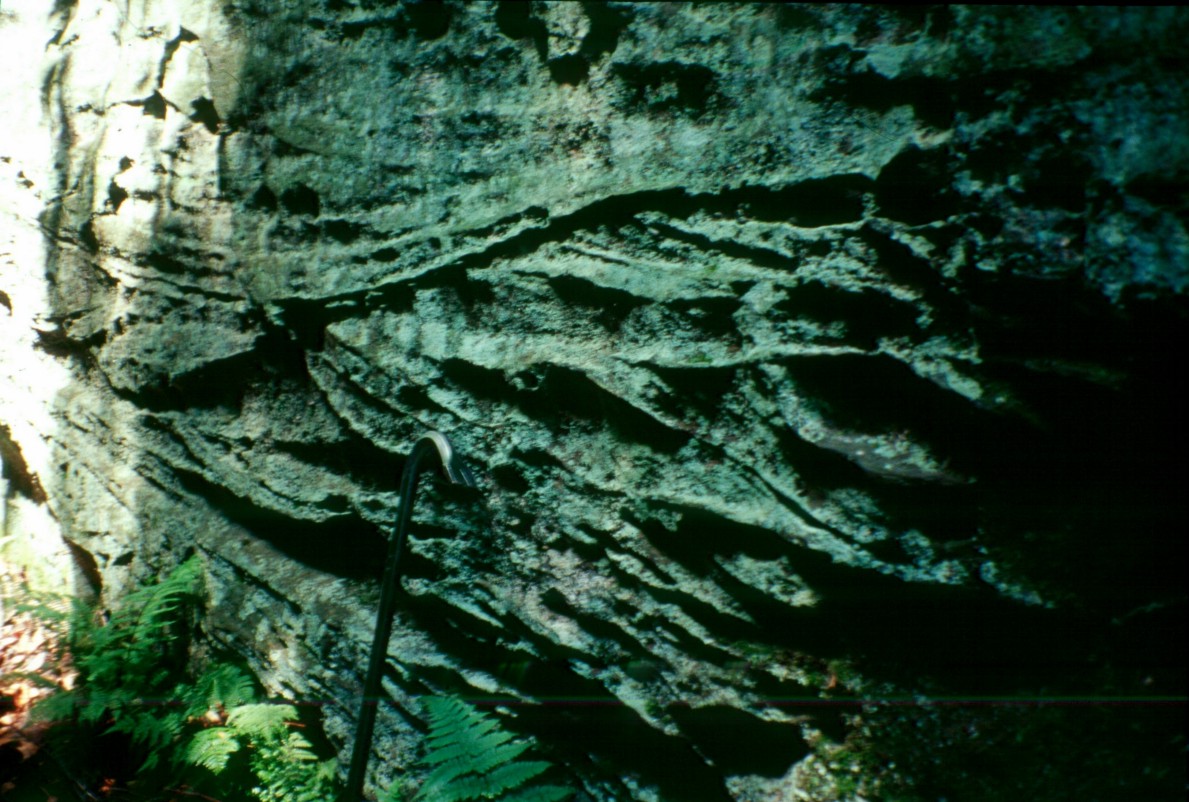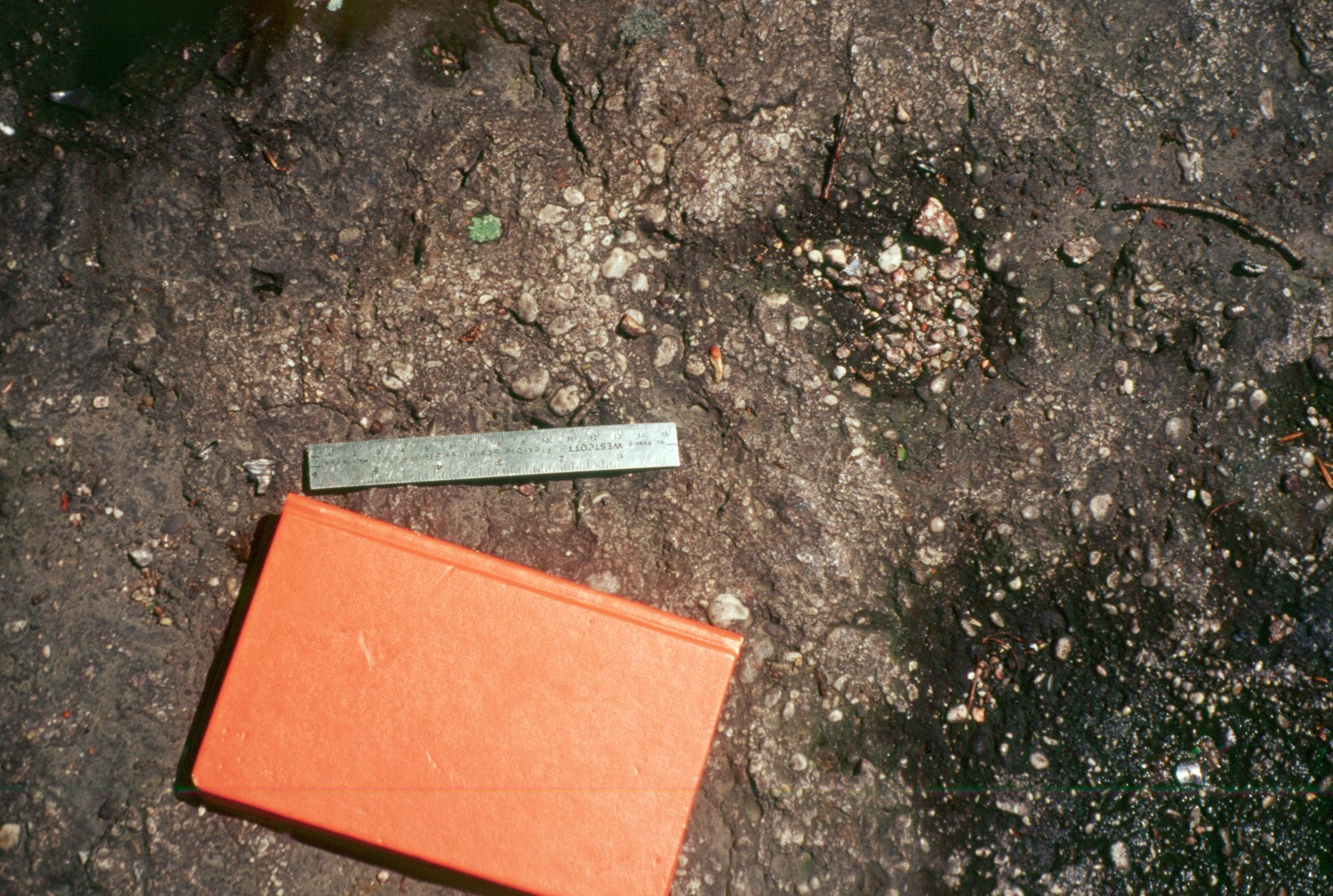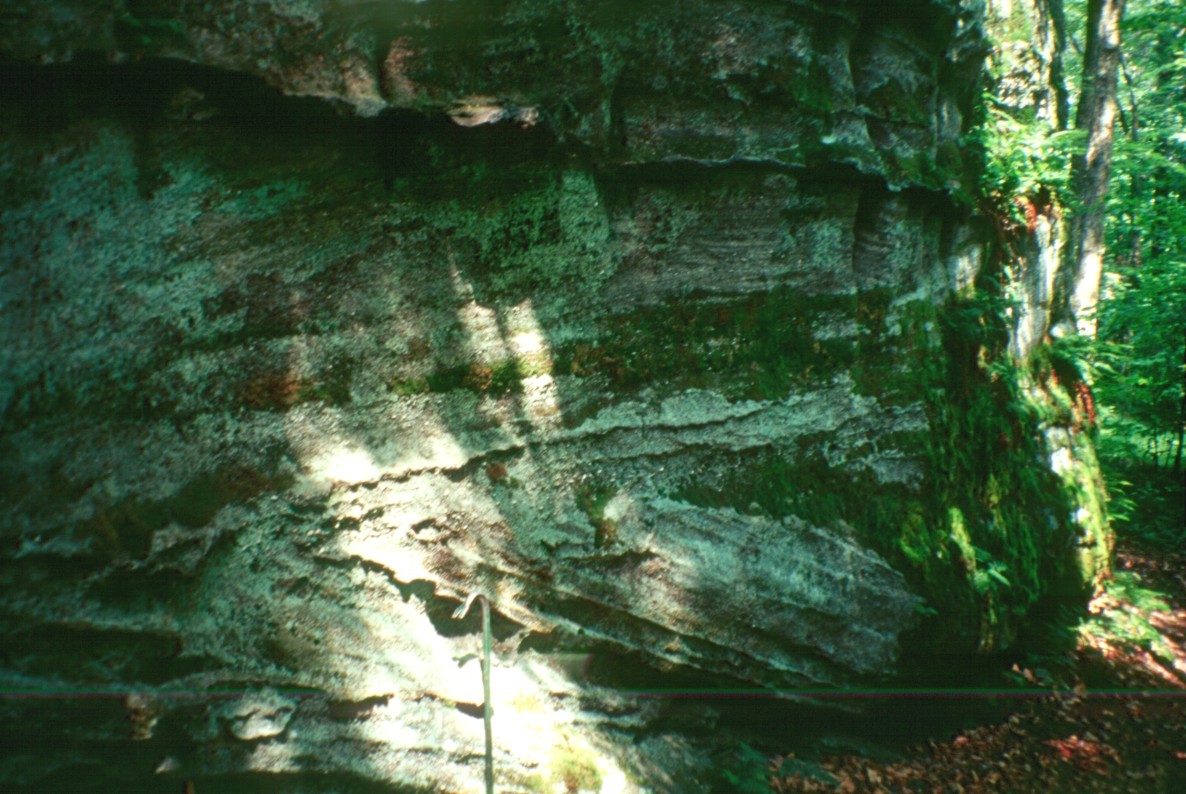Salamanca Conglomerate (Carll, 1880) and Wolf Creek Conglomerate (Williams, 1887)
Lithology. The lithology of both the Salamanca and Wolf Conglomerates were comprised of clasts of cloudy white quartz, oblate discoids that were 0.5 – 2 centimeters in size and a matrix is a medium to coarse sand forming an oligomict quartz orthoconglomerate. The conglomerate lenses were variable in thickness, but reach thickness of at least 4.2 meters at Little Rock City in the Salamanca quadrangle. The bedding observed within the conglomerate blocks and outcrops contain steep foreset beds, tabular cross-sets; reversal in the dip direction of the cross-beds is commonly observed between amalgamated beds of the conglomerate implying periods of alternating flow. Within the sections of the foreset bedding, occur small internal channels that were approximately 0.5 meters deep and 2.5 meters wide. Herringbone cross-beds were also found within some beds further suggesting a cyclical alternation in current direction. In the western portion of the study area, the conglomerate blocks and outcrops exhibit hard layers and ridges that ranged from curvilinear to complex shapes that commonly cross observed bedding planes. These ridges were interpreted to represent pseudo cross-bedding formed post-depositionally by groundwater flowing through the conglomerate and depositing minerals parallel to the flow path. In loose blocks found in Allegany State Park, Salamanca quadrangle, coarse sandstone beds were interbedded with the conglomerate beds. The observed contact between the sandstone and conglomerate beds is undulating, with the sandstones containing small, 2-dimensional dunes.
Ichnology. The coarse-grained lithology of the conglomerates makes identification of trace fossils within the conglomerates impossible. The absence of outcrops containing the contact with the underlying units precludes the possibility of finding trace fossils that incorporated sediment from the conglomerate beds as would be expected if a Glossifungites ichnofacies were present.
Interpreted Depositional Environment. It was hoped that outcrop containing both the conglomerate lenses and the underlying units would be found to enable a thorough examination of the contact between the units. If the contact were erosional, then the conglomerate lenses would most likely represent infilled channels or estuaries, possibly representing incised valleys. If the contact was not erosional but down-lapping on top of the underlying unit, then the conglomerates may represent tidal inlets, tidal barrier bars, or a gravel beach. The importance of knowing which one is correct would allow the trend of the conglomerate lens to be speculated: incised valley and estuaries would trend perpendicular to the paleoshoreline, whereas barrier bars a beaches would trend parallel. From the sedimentary structure present, the alternating currents suggest a tidal presence during deposition; however, tides in the Catskill Sea during the Late Devonian were believed to be small and insignificant. The oblate-shaped clasts in the conglomerate were typically found in a beach depositional environment; however, the observed bedding structures were not typical for a shoreline beach, nor does the sedimentation pattern of conglomerates alternating with coarse sandstones suggest a normal beach deposition. The interpreted depositional environment tries to account for both environmental observations, that the Salamanca and Wolf Creek conglomerates represent transgressive incised valley deposits. The interpretation suggests that during period of low relative sea level, streams and rivers incised the alluvial plain to reestablish the hydraulic gradient, during which time a normal sand-rich beach was being supplied coarser materials transported from the stream and rivers. During subsequent transgression, the rising relative sea level drowns both the beach and floods the rivers forming estuaries. The sediments of the drowned beach were eroded, the finer grains were transported away and the coarser gravels were reworked and redeposited in the estuaries forming the lenticular gravel deposits from the former beach gravels. The alternating flow structures would result from an interplay of fluvial currents directed seaward and tidal currents, magnified by the restricted channels, directed landward.
Salamanca Conglomerate

Salamanca Conglomerate at Little Rock City, base of the Conewango Group which we interpret as being incised valley fill.


